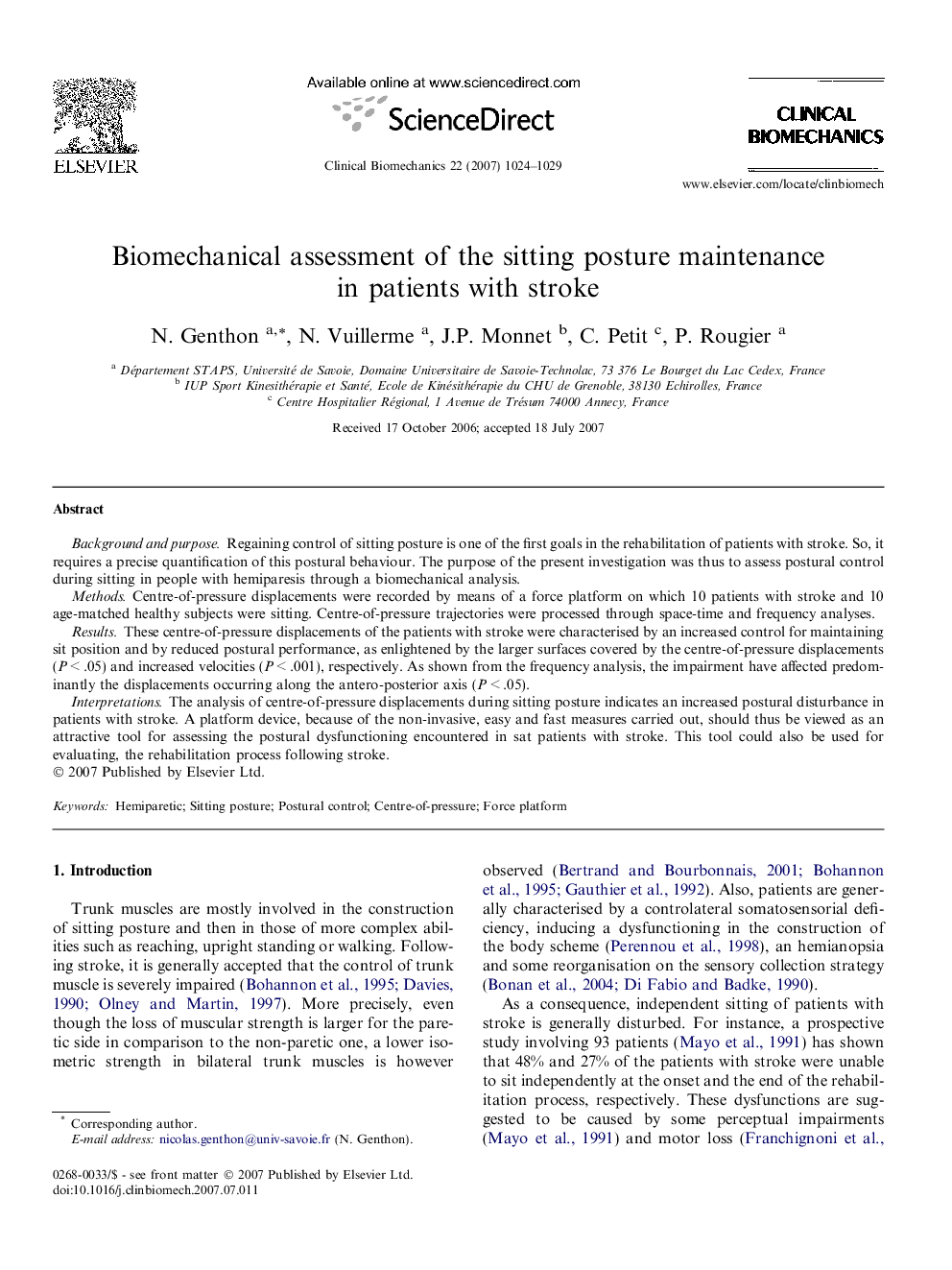| Article ID | Journal | Published Year | Pages | File Type |
|---|---|---|---|---|
| 4051224 | Clinical Biomechanics | 2007 | 6 Pages |
Background and purposeRegaining control of sitting posture is one of the first goals in the rehabilitation of patients with stroke. So, it requires a precise quantification of this postural behaviour. The purpose of the present investigation was thus to assess postural control during sitting in people with hemiparesis through a biomechanical analysis.MethodsCentre-of-pressure displacements were recorded by means of a force platform on which 10 patients with stroke and 10 age-matched healthy subjects were sitting. Centre-of-pressure trajectories were processed through space-time and frequency analyses.ResultsThese centre-of-pressure displacements of the patients with stroke were characterised by an increased control for maintaining sit position and by reduced postural performance, as enlightened by the larger surfaces covered by the centre-of-pressure displacements (P < .05) and increased velocities (P < .001), respectively. As shown from the frequency analysis, the impairment have affected predominantly the displacements occurring along the antero-posterior axis (P < .05).InterpretationsThe analysis of centre-of-pressure displacements during sitting posture indicates an increased postural disturbance in patients with stroke. A platform device, because of the non-invasive, easy and fast measures carried out, should thus be viewed as an attractive tool for assessing the postural dysfunctioning encountered in sat patients with stroke. This tool could also be used for evaluating, the rehabilitation process following stroke.
